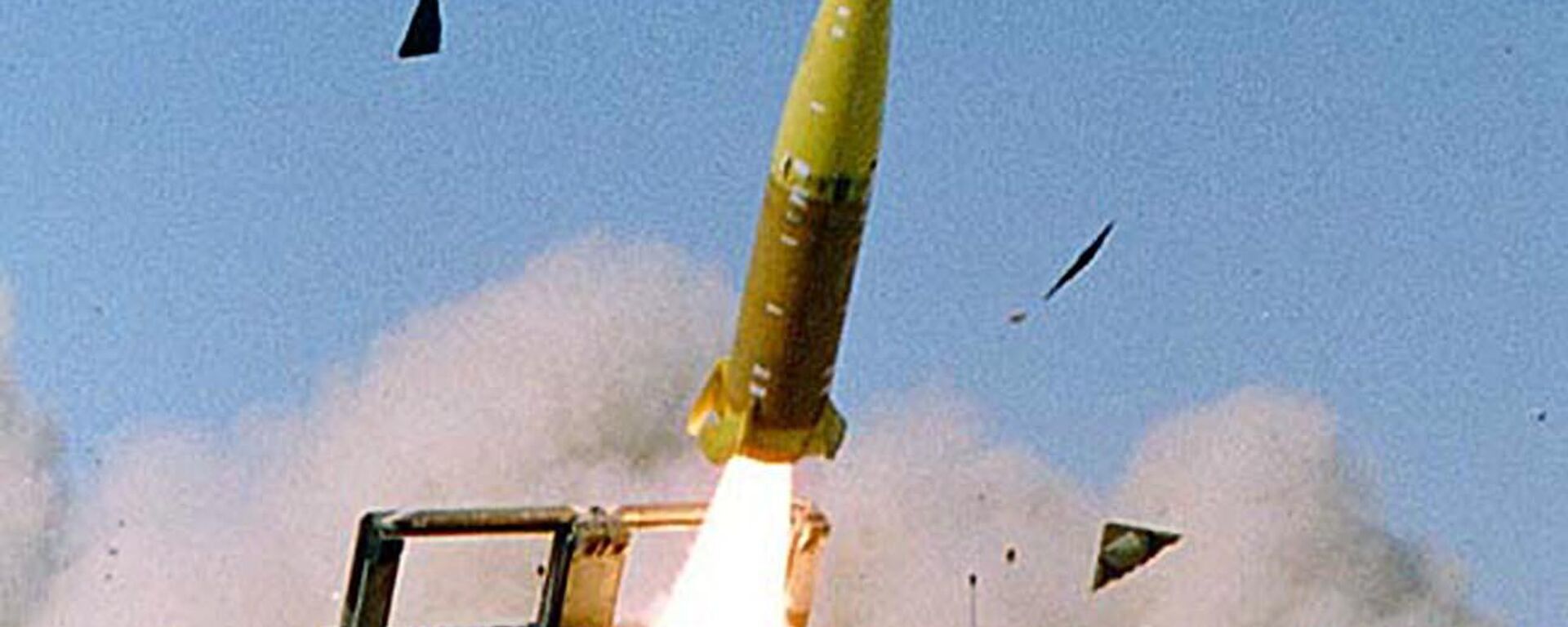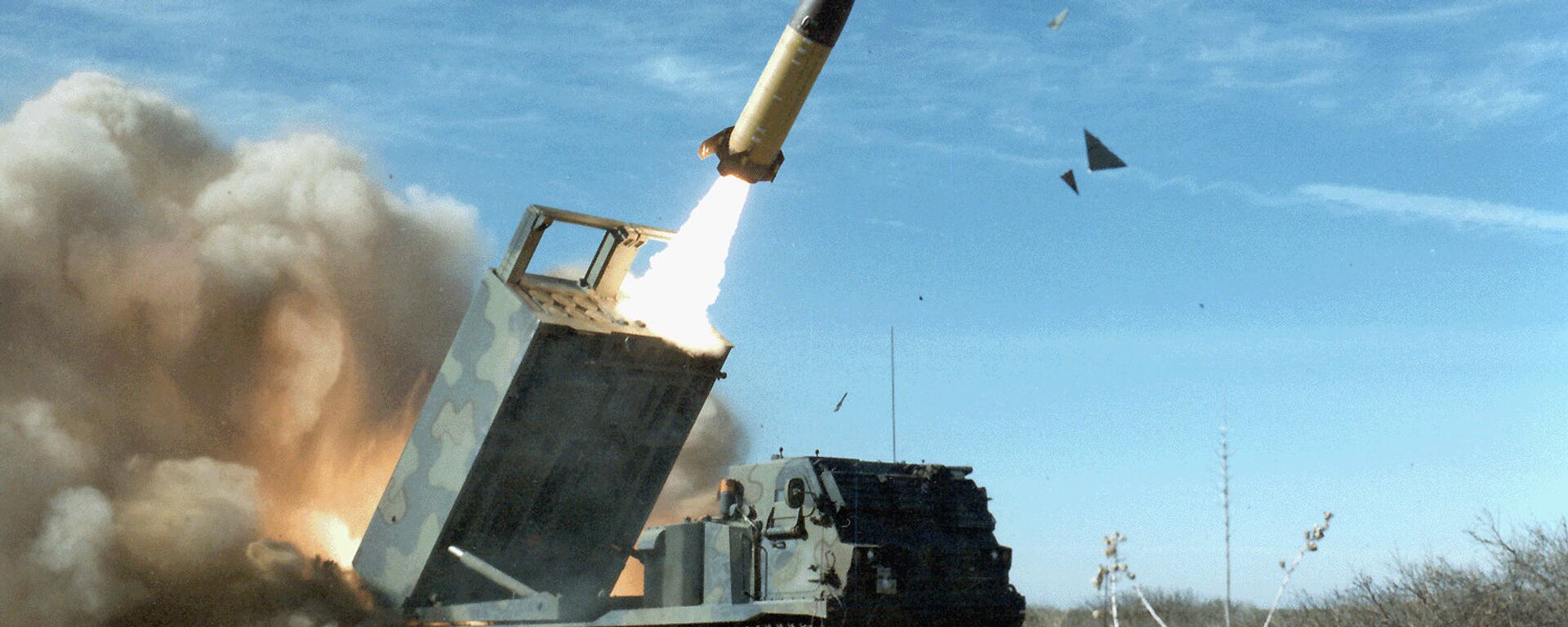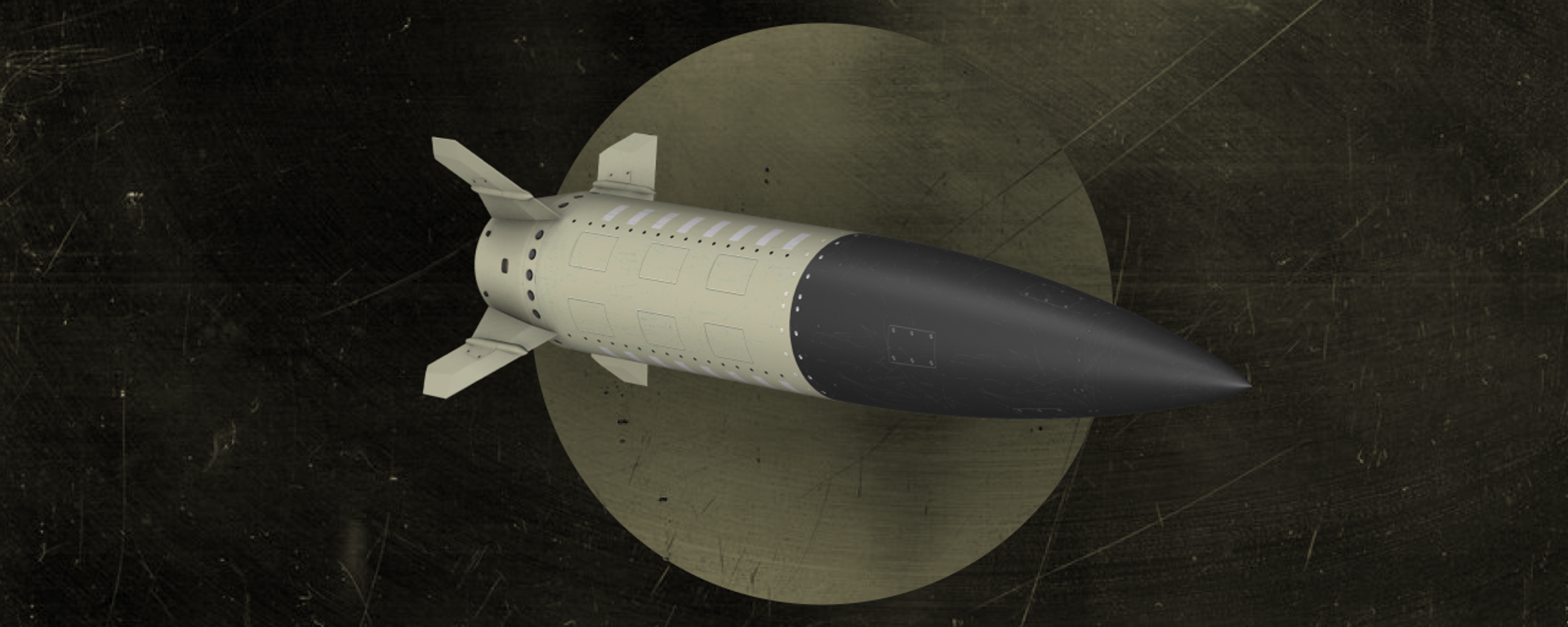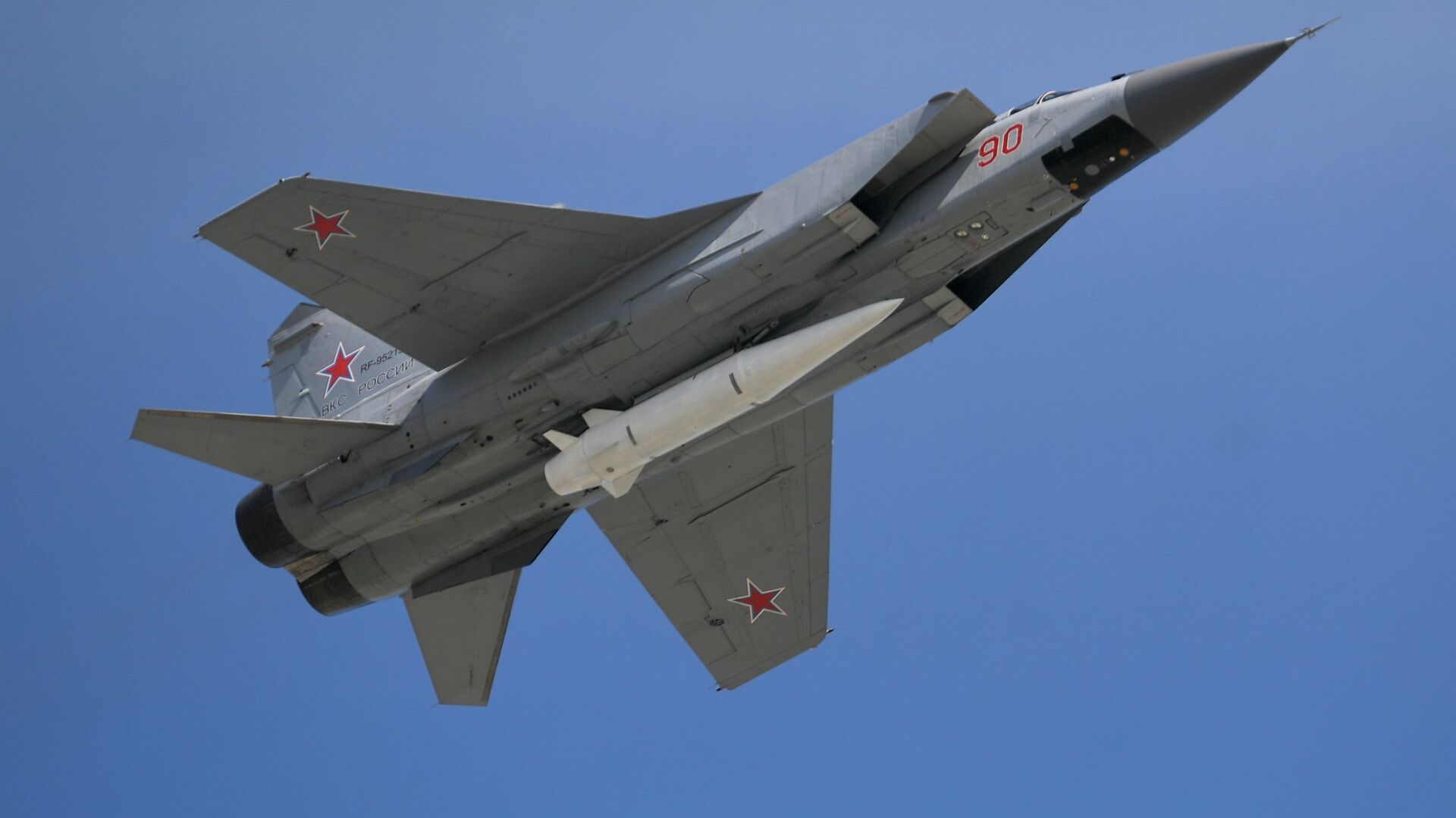https://sputnikglobe.com/20231019/atacms-deliveries-designed-to-shut-up-pro-ukraine-lobby-wont-change-conflicts-outcome-1114316164.html
ATACMS Deliveries Designed to ‘Shut Up’ Pro-Ukraine Lobby, Won’t Change Conflict's Outcome
ATACMS Deliveries Designed to ‘Shut Up’ Pro-Ukraine Lobby, Won’t Change Conflict's Outcome
Sputnik International
Russian President Vladimir Putin has announced that Russian Aerospace Forces MiG-31 jets armed with Kinzhal hypersonic missiles would start regular patrols over the Black Sea in response to aggressive US actions. Sputnik reached out to leading US and Russian geopolitics and military experts for their takes on what the deployment means.
2023-10-19T12:22+0000
2023-10-19T12:22+0000
2023-10-19T12:59+0000
mark sleboda
vladimir putin
russia
kiev
black sea
pentagon
russian aerospace forces
army tactical missile system (atacms)
high mobility artillery rocket system (himars)
kinzhal missile system
https://cdn1.img.sputnikglobe.com/img/106428/23/1064282303_0:158:3236:1978_1920x0_80_0_0_c4f03f23381435fcf1a7d1e675850ab6.jpg
“On my instructions, the Russian Aerospace Forces will commence permanent patrols in the neutral airspace over the Black Sea. Our MiG-31 aircraft are equipped with Kinzhal systems, which have a speed of Mach 9 and a range of over 1,000 kilometers,” President Vladimir Putin said, speaking to reporters in Beijing on Wednesday.The ATACMS delivery, coming amid NATO’s continued escalation of the proxy war against Russia in Ukraine, seems designed to placate the Kiev regime and its lobbyists in Washington, with the Pentagon apparently deciding to pawn off older versions of the missile on Ukraine to save the more potent models for China, says veteran international relations and security analyst Mark Sleboda.“First of all, it was pretty clear from announcements in Washington that the ATACMS was going to be sent – even what type was going to be sent, and that it was an older model of the ATACMS missile with a cluster munition warhead instead of a normal high explosive. Why? Because these are old on-the-shelf [weapons] and the Pentagon doesn’t feel that it needs them for its war with China,” Sleboda told Sputnik. The “remaining normal ATACMS” in the US’ arsenal will be held onto to prevent a “conventional missile gap in the South China Sea and Taiwan Strait,” he added.Having said that, Russia shouldn’t discount the deadliness of even these older, inertial navigation-dependent weapons, Sleboda stressed, pointing out, for example, that while the absence of GPS makes them less accurate, it also makes it more difficult, if not impossible, for them to be jammed using electronic warfare.Instead, he said, Kiev has attempted to use them to target Russian airfields and an arms depot.“That falls within what it can be used for because, stupidly, whoever is in charge of these airfields left some aviation, in this case some nine helicopters, outside of protected shelters. And if there’s one thing that should have been learned from both sides in this war right now, it’s that if you aren’t immediately using aviation, then it should be in protected shelters or it is a target… It’s not a crippling loss. Russia has over 100 Ka-52 helicopters in its inventory, but it’s not insignificant either,” Sleboda noted.“They also supposedly hit an arms depot. Arms depots are hit in this conflict every day, and possibly an air defense missile launcher. But that’s it. We know that the Kiev regime fired 18 of these missiles. They say 18… And from I’ve heard, about half of them were taken down by Russian air defense. And what got through is what did that damage. And again, it’s damage that could have very easily been avoided with the type of cluster munition warhead that was used if the helicopters had been properly stored and protected,” the observer reiterated.Now, he added, Kiev may have as few as two ATACMS left in its inventory. And while it’s likely that more will be sent in fresh US arms packages, the numbers shows just how “small doses these are being doled out.”Kinzhal ResponseFor his part, Russian military expert and reserve Captain 1st Rank Vasily Dandykin told Sputnik that however many ATACMS the US ends up giving to Kiev, Russia’s forces will be able to counter them with its Pantsir, Tor, Buk-2, Buk-3, S-300, S-350, and S-400 air and missile defense systems, which have already been fine-tuned to counter American systems, including the HIMARS.“This issue will be resolved, and they will be fired, judging by their range, from the southern shores of the Black Sea region, including Odessa, Nikolayev, perhaps a little further in Dnepropetrovsk region,” Dandykin told Sputnik.“Our response will include the patrol of long-range interceptor jets carrying Kinzhal missiles. They carry one Kinzhal apiece. In principle, this is a hypersonic missile with a speed of Mach 9, and a range up to 1,000 kilometers,” enough to target enemy forces virtually across any point in the Black Sea aquatorium, and presumably including the ATACMS and other NATO missile system launch sites in Ukraine.
https://sputnikglobe.com/20231017/ukraine-used-atacms-missiles-with-cluster-munitions-to-attack-russian-cities-1114266625.html
https://sputnikglobe.com/20231018/russian-air-defenses-well-adapted-to-taking-out-aged-atacms-missiles-us-gave-to-ukraine-1114299944.html
https://sputnikglobe.com/20231012/atacms-why-are-us-war-hawks-so-desperate-to-send-tactical-missile-system-to-ukraine-1114148434.html
russia
kiev
black sea
Sputnik International
feedback@sputniknews.com
+74956456601
MIA „Rossiya Segodnya“
2023
News
en_EN
Sputnik International
feedback@sputniknews.com
+74956456601
MIA „Rossiya Segodnya“
Sputnik International
feedback@sputniknews.com
+74956456601
MIA „Rossiya Segodnya“
atacms, kinzhal, missile, mig-31, jet, aircraft, hypersonic, ballistic, united states, russia, ukraine, black sea, proxy war, strikes, attacks
atacms, kinzhal, missile, mig-31, jet, aircraft, hypersonic, ballistic, united states, russia, ukraine, black sea, proxy war, strikes, attacks
ATACMS Deliveries Designed to ‘Shut Up’ Pro-Ukraine Lobby, Won’t Change Conflict's Outcome
12:22 GMT 19.10.2023 (Updated: 12:59 GMT 19.10.2023) Russian President Vladimir Putin has announced that Russian Aerospace Forces MiG-31 jets armed with Kinzhal hypersonic missiles would start regular patrols over the Black Sea in response to aggressive US actions. Sputnik reached out to leading US and Russian geopolitics and military experts for their takes on what the deployment means.
“On my instructions, the Russian Aerospace Forces will commence permanent patrols in the neutral airspace over the Black Sea. Our MiG-31 aircraft are equipped with Kinzhal systems, which have a speed of Mach 9 and a range of over 1,000 kilometers,” President Vladimir Putin
said, speaking to reporters in Beijing on Wednesday.
“This is not a threat, but we will exercise visual control – control with weapons, over what is happening in the Mediterranean Sea,” Putin noted, referring to the dramatic expansion of the US military footprint in the Middle East amid the Israel-Gaza war.
Putin’s remarks came hours after Ukraine first used its freshly US-delivered ATACMS missiles to attack the port city of Berdyansk in Zaporozhye. Calling the missiles’ delivery a “mistake” and stressing that the weapons would “create additional threats,” Putin assured that Russia “will be able to repel” ATACMS strikes, and that the weapons wouldn’t change the situation on the battlefield.

17 October 2023, 17:58 GMT
The ATACMS delivery, coming amid NATO’s continued escalation of the proxy war against Russia in Ukraine, seems designed to placate the Kiev regime and its lobbyists in Washington, with the Pentagon apparently deciding to pawn off older versions of the missile on Ukraine to save the more potent models for China, says veteran international relations and security analyst Mark Sleboda.
“First of all, it was pretty clear from announcements in Washington that the ATACMS was going to be sent – even what type was going to be sent, and that it was an older model of the ATACMS missile with a cluster munition warhead instead of a normal high explosive. Why? Because these are old on-the-shelf [weapons] and the Pentagon doesn’t feel that it needs them for its war with China,” Sleboda
told Sputnik. The “remaining normal ATACMS” in the US’ arsenal will be held onto to prevent a “conventional missile gap in the South China Sea and Taiwan Strait,” he added.
“So in order to shut [Ukrainian President Volodymyr] Zelensky and the pro-Kiev regime lobby in the US up, they sent something,” the observer suggested, pointing out that Kiev conveniently already has the HIMARS ground-based precision rocket artillery launchers that can be used to launch ATACMS.
Having said that, Russia shouldn’t discount the deadliness of even these older, inertial navigation-dependent weapons, Sleboda stressed, pointing out, for example, that while the absence of GPS makes them less accurate, it also makes it more difficult, if not impossible, for them to be jammed using electronic warfare.
“With a cluster munition warhead, it’s a very particular weapon [that] can only be used for certain uses because cluster munitions spread out over an area, but have no penetrative power, which means it cannot be used to hit anything that has hardened protection – you know, a command and control center in a fortification or a bunker on the ground… So it has very limited utility,” Sleboda said.

18 October 2023, 18:49 GMT
Instead, he said, Kiev has attempted to use them to target Russian airfields and an arms depot.
“That falls within what it can be used for because, stupidly, whoever is in charge of these airfields left some aviation, in this case some nine helicopters, outside of protected shelters. And if there’s one thing that should have been learned from both sides in this war right now, it’s that if you aren’t immediately using aviation, then it should be in protected shelters or it is a target… It’s not a crippling loss. Russia has over 100 Ka-52 helicopters in its inventory, but it’s not insignificant either,” Sleboda noted.
“They also supposedly hit an arms depot. Arms depots are hit in this conflict every day, and possibly an air defense missile launcher. But that’s it. We know that the Kiev regime fired 18 of these missiles. They say 18… And from I’ve heard, about half of them were taken down by Russian air defense. And what got through is what did that damage. And again, it’s damage that could have very easily been avoided with the type of cluster munition warhead that was used if the helicopters had been properly stored and protected,” the observer reiterated.
Now, he added, Kiev may have as few as two ATACMS left in its inventory. And while it’s likely that more will be sent in fresh US arms packages, the numbers shows just how “small doses these are being doled out.”
Over time, Sleboda expects the capabilities of Russia’s air defenses against ATACMS specifically to go from 40-50 percent to 60-70 percent “or more,” meaning that the ATACMS are “certainly no game changer.” The “small amount that was sent and the fact that its these old systems with a limited range and a warhead that is very particular in its usability says to me that this was a token effort by the US and it’s certainly not going to change anything on the battlefield,” the observer summarized.
For his part, Russian military expert and reserve Captain 1st Rank Vasily Dandykin told Sputnik that however many ATACMS the US ends up giving to Kiev, Russia’s forces will be able to counter them with its Pantsir, Tor, Buk-2, Buk-3, S-300, S-350, and S-400 air and missile defense systems, which have already been fine-tuned to counter American systems, including the HIMARS.
“This issue will be resolved, and they will be fired, judging by their range, from the southern shores of the Black Sea region, including Odessa, Nikolayev, perhaps a little further in Dnepropetrovsk region,” Dandykin told Sputnik.
“Our response will include the patrol of long-range interceptor jets carrying Kinzhal missiles. They carry one Kinzhal apiece. In principle, this is a hypersonic missile with a speed of Mach 9, and a range up to 1,000 kilometers,” enough to target enemy forces virtually across any point in the Black Sea aquatorium, and presumably including the ATACMS and other NATO missile system launch sites in Ukraine.
The Kinzhal “cannot be shot down, a fact already confirmed by Ukraine amid the missile’s use in the special military operation,” Dandykin said, recalling the hypersonic missile’s successful use against Patriot missile defense systems in Kiev. “This is a very serious weapon carrying several hundred kilograms of explosives. This is our adequate, indestructible response. Because for every action there is a reaction, a response which cannot be shot down,” Dandykin stressed.

12 October 2023, 18:40 GMT





